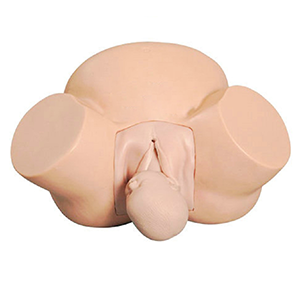26-12-2024
ADA MED SUPPLY LIMITED
Childbirth is a complex and uncertain process, and the midwife's clinical judgment and ability to react quickly are critical, especially in high-risk or emergency delivery situations. While traditional training models often fail to simulate real-world situations in emergency situations, the Advanced midwifery training model, as an advanced medical technology and training device, can provide high-fidelity simulations to help midwives improve these core skills in a risk-free environment. This paper will explore how these training models can help midwives make correct decisions and take effective measures quickly in the face of complex and urgent labor.

Advanced midwifery training model
1. Simulate diverse and complex childbirth scenarios
The advanced midwifery training model can simulate a variety of common and complex labor situations, such as shoulder dystocia, postpartum hemorrhage, and abnormal fetal position. Through these highly simulated scenarios, midwives can practice key decisions during childbirth in simulated emergency situations. These models help midwives improve their clinical judgment in high-pressure environments by providing dynamic responses, such as simulating changes in maternal blood pressure and abnormal fetal heart monitoring. Data support shows that midwives trained in simulations can significantly reduce reaction times and make more accurate clinical decisions when faced with complex situations.
2. Improve quick reaction ability and operation skills
In clinical practice, many complex birth complications (such as postpartum hemorrhage, placental abruption, etc.) require midwives to respond in a very short time. The advanced midwifery training model helps midwives improve their response time by repeatedly simulating these emergency situations. For example, when simulating postpartum bleeding, the model can use automatic feedback mechanisms to inform midwives whether to take timely measures to stop bleeding. Research data showed that midwives' response time during emergency operations was reduced by an average of 30% by training the model. This immediate feedback not only improves the precision of the operation, but also reduces the risks that may arise from delayed treatment during the actual delivery.
3. Cultivate accurate evaluation and decision-making ability
The advanced midwifery training model not only assists midwives in operational training, but also helps evaluate the quality of their decisions through an integrated evaluation system that records the trainees' judgments and actions in real time. Through the model's built-in Settings, students can make different judgments based on different clinical situations, and the system will score them based on the appropriateness of their decisions and provide detailed feedback. For example, when dealing with fetal abnormalities, the model simulates different operational options (such as lateral lying, fetal rotation, etc.) and provides real-time data support based on the choices made by the student to help them understand the potential consequences of each decision. This training not only improves midwives' clinical decision-making skills, but also accelerates their ability to adapt to real-world situations.
4. Improve clinical knowledge application through data analysis
Advanced midwifery training model makes training more scientific and personalized by integrating data analysis. Students' performance after each training session is recorded in detail, and the model provides personalized feedback through data analysis, pointing out deficiencies of students in specific situations. For example, the model may suggest that the midwife did not react quickly enough to manage certain complications, such as amniotic fluid embolism, or that airway management steps were slightly delayed in the case of fetal asphyxia. Through this data-driven feedback, midwives are able to continuously improve their clinical judgment and operational skills, and avoid making the same mistakes in practice.
5. Improve teamwork
Midwives often work closely with other medical staff, such as obstetricians, anesthesiologists and nurses, during childbirth. Advanced midwifery training models can simulate not only a single operation, but also a teamwork situation. Through the team training model, participants can improve their communication and collaboration skills in a multidisciplinary team environment, helping midwives work more effectively with team members and make the right decisions quickly. Data support shows that after team simulation training, midwives' team response speed and processing efficiency in emergency situations have been significantly improved.
Conclusion
Advanced midwifery training models significantly improve midwives' clinical judgment and rapid response capabilities by providing high-fidelity simulations, real-time feedback and data support. Through repeated training and accurate assessment, midwives are able to quickly make the right decisions and effective interventions in complex or emergency birth situations. This will not only improve maternal and infant safety and reduce birth complications, but also promote the overall development of midwifery by improving operational precision and team collaboration. Therefore, with the help of this advanced training equipment, the professional skills of midwives have been significantly improved, especially in the case of complex emergency response capacity has been greatly enhanced.